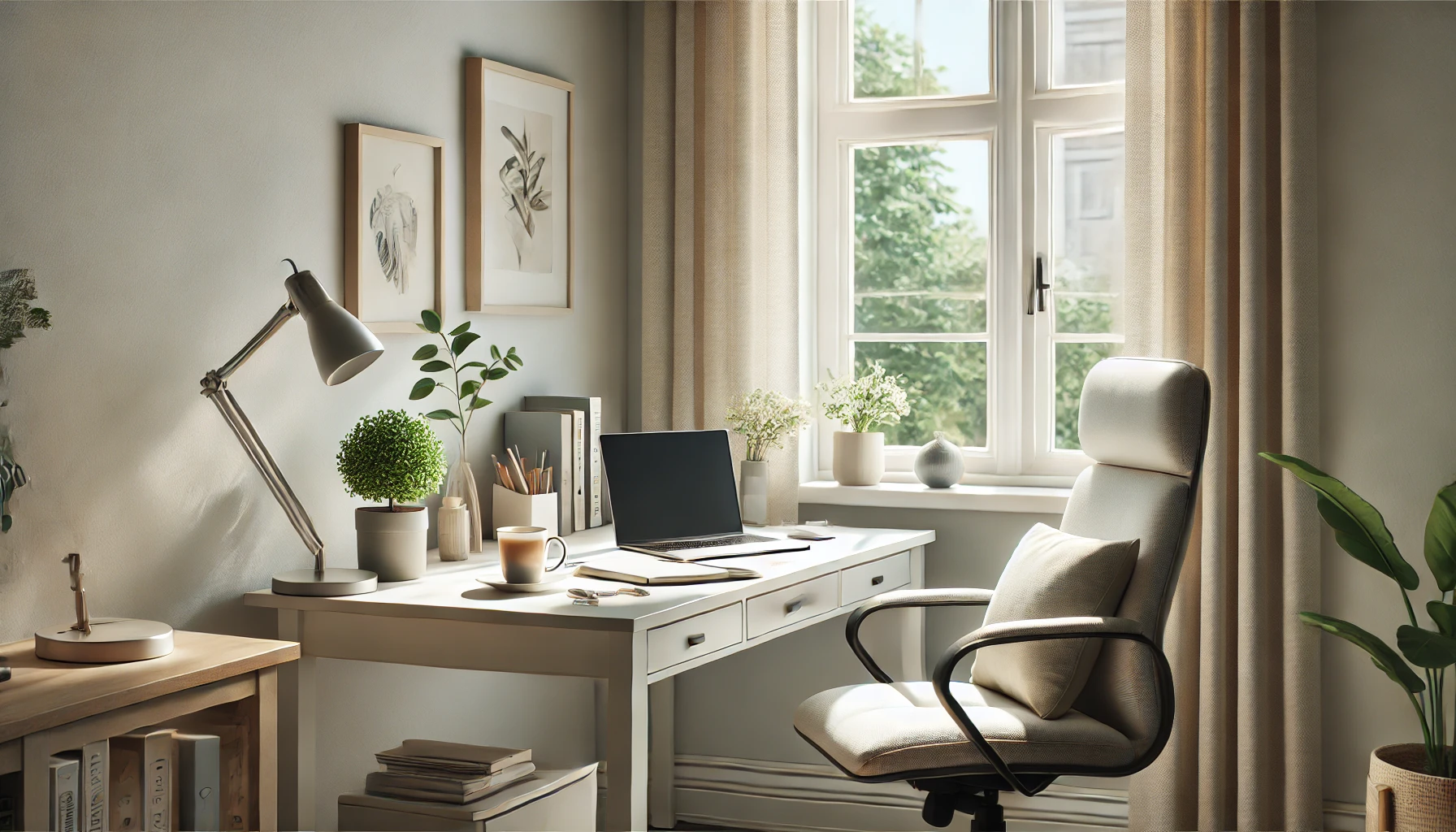Working from home has its perks—no commute, more flexibility, comfy clothes. But it also comes with distractions, blurred boundaries, and the temptation to procrastinate.
If you want to stay focused, energized, and efficient throughout your workday, your environment matters more than you think.
In this article, you’ll learn how to create a home workspace that boosts productivity, supports focus, and helps you get more done—without burning out.
Why Your Environment Affects Your Output
Your surroundings influence how you feel, think, and perform. A cluttered, noisy, or chaotic space can create:
- Mental fatigue
- Increased procrastination
- Lower focus and motivation
- More stress and less satisfaction
On the flip side, a clear, calm, and organized workspace can help you:
- Focus faster
- Think more clearly
- Work with less stress
- Feel proud and in control
Let’s dive into how to build that kind of space—right where you are.
1. Choose (or Claim) Your Space
Even if you don’t have a dedicated office, designate a specific area as your work zone. This creates a mental boundary between “work” and “home.”
It could be:
- A desk in the corner of a room
- A section of your dining table
- A foldable workstation near a window
💡 Tip: Avoid working from your bed—it confuses your brain and messes with your sleep routine.
2. Declutter and Simplify
Clear space = clear mind.
Start by removing:
- Unnecessary objects from your desk
- Old papers or mail
- Visual distractions
Keep only what you need to do your work: laptop, charger, notebook, pen, water bottle.
A minimal setup supports deep focus.
3. Let the Light In
Natural light improves mood, energy, and alertness. If possible, set up near a window.
No windows? Use a daylight-mimicking lamp to brighten the space. Bonus: add a soft desk lamp for comfort during early or late hours.
4. Add Touches of Nature
Plants do more than decorate. They reduce stress, increase creativity, and purify the air.
Start simple:
- Snake plant
- Pothos
- Peace lily
- Small succulents
Even a single plant can bring calm and life to your space.
5. Ergonomics Matter
Comfort supports stamina. Invest in or adjust:
- A chair that supports your back
- A desk or laptop stand at eye level
- A keyboard and mouse that reduce wrist strain
Good posture keeps your body relaxed and your brain focused.
6. Use Sound Intentionally
Silence isn’t always ideal. Try:
- Lo-fi music or ambient sounds for focus
- Nature sounds to relax
- Noise-canceling headphones if your space is loud
Find what works best for your brain and mood.
7. Create a Start and End Ritual
Without a commute, it’s easy to blur the line between work and personal life. Create rituals to mark the beginning and end of your day:
- Morning: light a candle, review your planner, or stretch
- Evening: close your laptop, tidy your desk, write tomorrow’s to-dos
These signals help your brain shift gears and stay balanced.
8. Make It Yours (Without Overdoing It)
Personalize your workspace with a few meaningful items:
- A photo that inspires you
- A quote that keeps you motivated
- A vision board or small whiteboard
But keep it uncluttered—your workspace is for action, not decoration overload.
Final Thoughts: Your Space Shapes Your Success
You don’t need a fancy home office to be productive—you just need an environment that supports your focus and energy.
Start small. Tidy your desk. Open a window. Add one plant. Light a candle. These little choices compound into a space that fuels your best work.
Because when your environment works for you, you work better.

Daniel Carter believes that small daily changes lead to extraordinary results. Through simple and effective strategies, he inspires readers to take control of their routines, overcome procrastination, and unlock their full potential.











